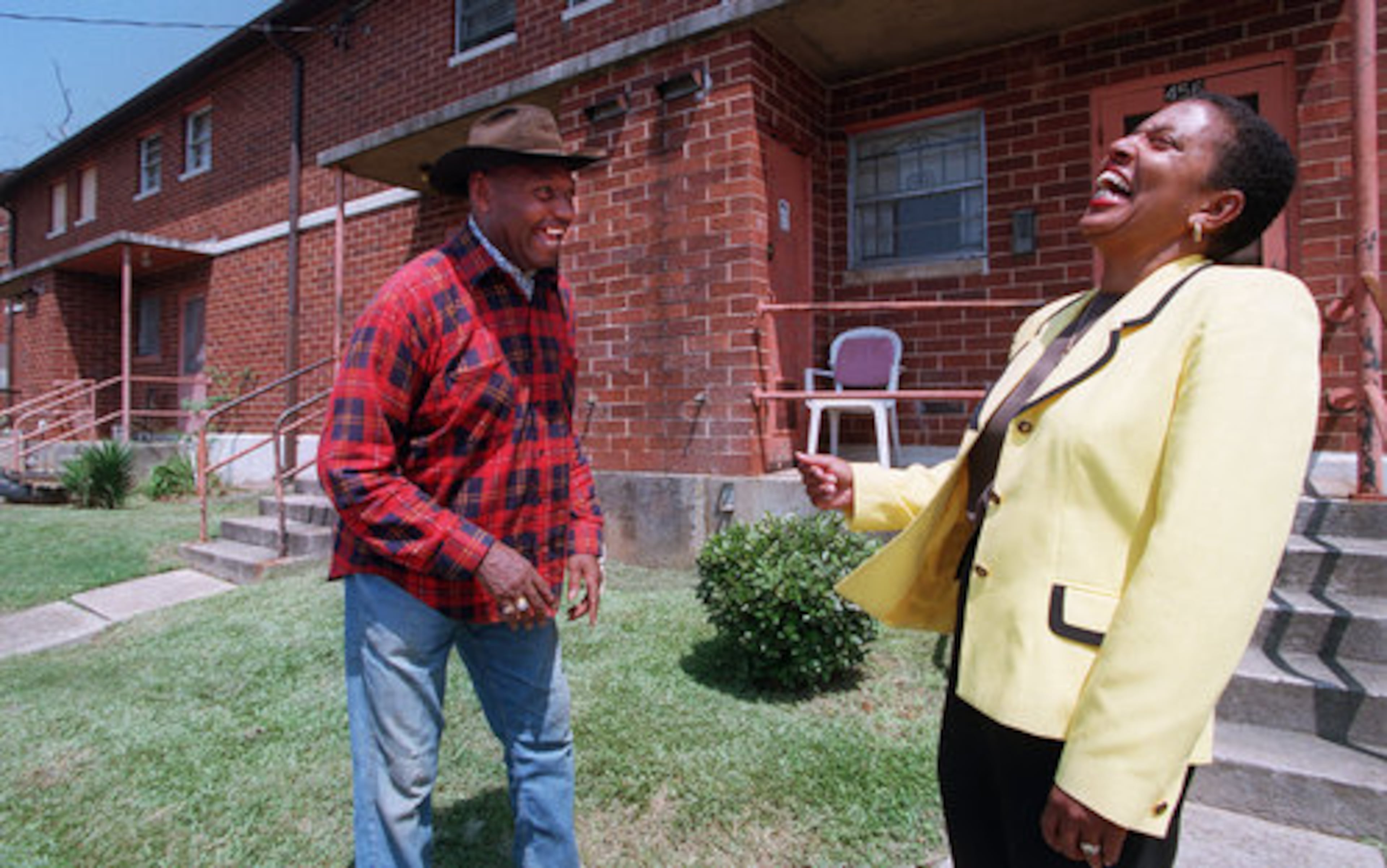Atlanta public housing approach sought to uplift residents living in poverty

Editor’s note: This guest opinion column is adapted from an excerpt of the 2025 book “The Projects: A New History of Public Housing” with the author’s permission.
In 1996, the U.S. Department of Housing and Urban Development launched the Moving to Work demonstration program with the objectives to “give incentives to families with children where the head of household is working, is seeking work, or is preparing for work … and increase housing choices for low-income families.”
Among the first Moving to Work authorities was one of the largest in the South, that of Atlanta. When the onetime corporate finance attorney, Renee Glover, took the helm of the Atlanta Housing Authority in 1994, that agency owned and managed 14,000 apartments in 43 properties. Its total of 50,000 tenants — 98% of them African American — meant that the percentage of Atlanta’s overall population living in projects was the highest in the U.S.
During Glover’s nearly 20-year tenure, that would change drastically. Over the course of those two decades, Glover did more than direct the demolition of notorious projects such as Techwood Homes — which Glover unsparingly described as “toxic.” With the exception of a handful of apartment complexes for the elderly, the Housing Authority tore down not just a few but all of its “legacy” projects.
How AHA helped former public housing residents
Some residents relocated to new, mixed-income developments erected on the sites of 13 former projects, whose 7,000-plus rental units included 3,600 set aside for former public housing tenants. That meant, of course, that the vast majority of former public housing tenants were “vouchered out”: provided with a housing choice voucher to pay for the rent in a privately owned apartment.

But there was more to what Glover branded as the “Atlanta Way.” It included unusual conditions made possible by Moving to Work. To qualify for — and retain — the rental subsidy, the former project tenants had to do just what the program’s name said: They faced a work requirement.
The requirement, however, was not imposed in a vacuum. It included, as well, what might be called a social work element. Under Glover, the Housing Authority would retain an outside counseling firm to work with individual former project tenants, in what can only be described as an effort to change their hopes, their habits and, ultimately, their lives, as I found when I visited.
The troops in the effort were employees of the Integral Youth and Family Project. Its president, Hope Boldon, told me that many of the households with which it dealt had not only not been employed but may have never paid bills for themselves.
Utilities came with public housing, food stamps helped with groceries and everything else was paid for in cash. Boldon’s troops are virtually all young African Americans in their 20s and early 30s. Some have made the journey out of public housing themselves.
Program costs were high, but so were results

The challenge of linking housing assistance to a path out of poverty was made clear by these idealistic young counselors. But so was the prospect of success. As adept as people in the public housing world have grown at maximizing government benefits, they are usually utterly unprepared to make their own way in life.
The cost of the Integral Youth and Family Project is substantial.
Over a seven-year period, the AHA has paid it $26.7 million to work with 14,281 people. But that is a substantial percentage of metropolitan Atlanta’s 81,000 Black, low-income residents, meaning that the program has the potential not only to help individuals but also to change broader social norms.
Over a seven-year period, between 2002 and 2009, the percentage of Atlanta Housing Authority household heads holding a job rose from 18.5% to 62%.
The statistical results are impressive, although it is impossible to determine which part of Glover’s plan — the work requirement or the counseling — deserves more credit. Glover, herself the daughter of Jim Crow–era northern Florida, thinks the combination of Black self-help and government effort that she is providing is welcome.
As she puts it, “On so many occasions, people have said, ‘Thank you for believing in us’.”
The Atlanta approach reflects a key shift in the attitude of a public housing authority since its New Deal inception. As its population came to be dominated by low-income, single-parent households, its sense of mission changed, from that of simple provision of “safe and sanitary housing” to that of encouraging upward mobility — the “up and out” transition that many Americans had actually always seen as the implicit ideal of the projects but one that they failed, increasingly, to enable over time.
Howard A. Husock is the author of "The Projects: A New History of Housing" (NYU Press, 2025) and is a senior fellow in Domestic Policy Studies at the American Enterprise Institute.
More Stories
The Latest
